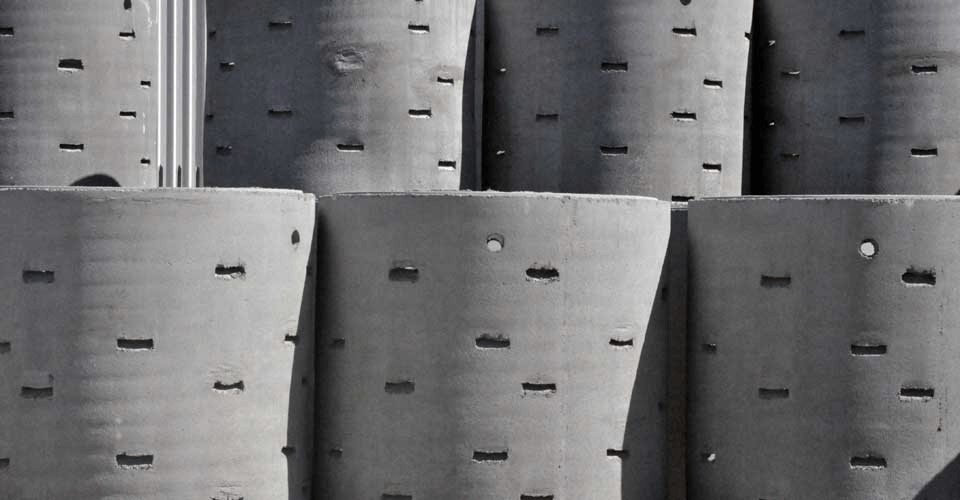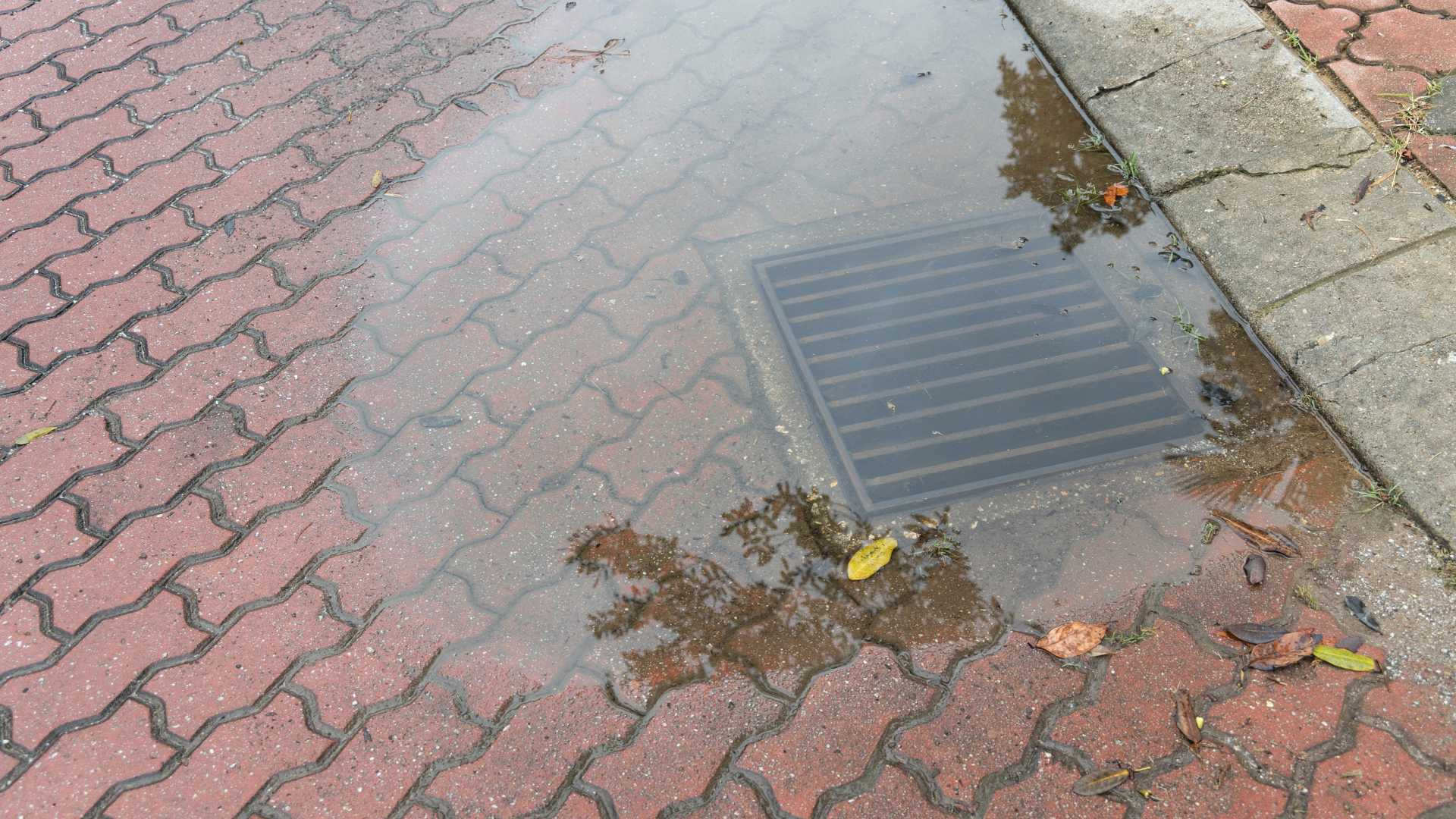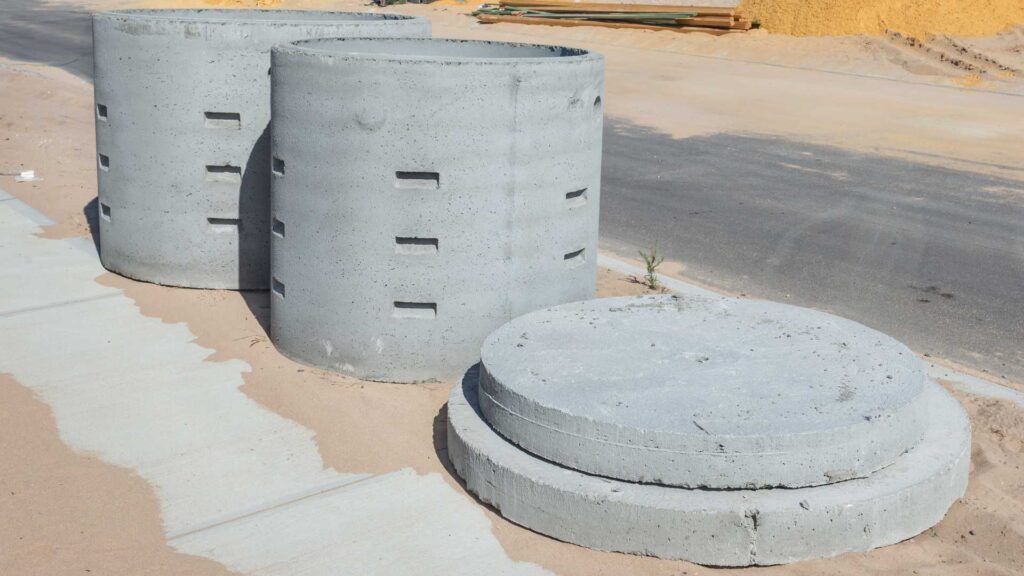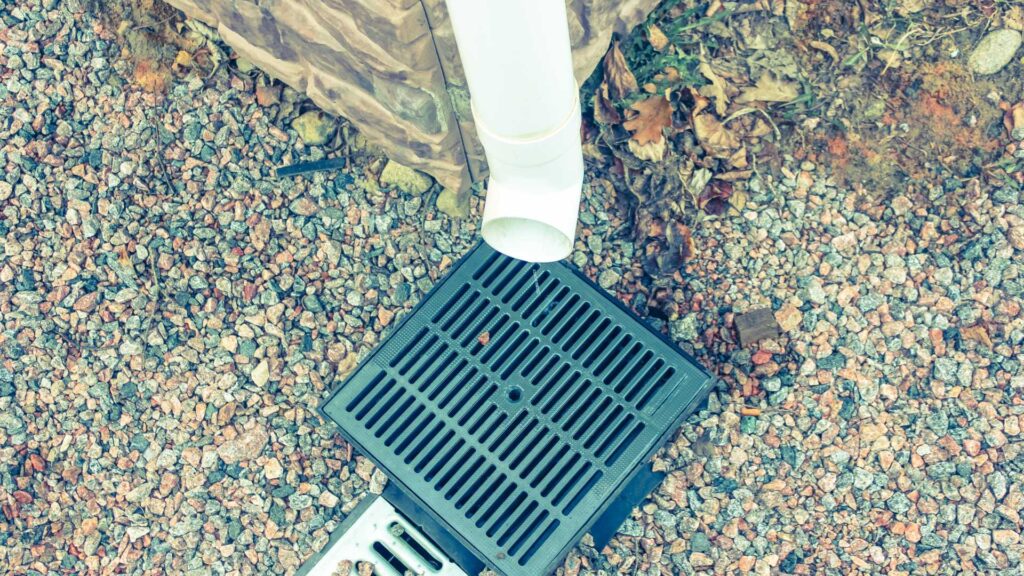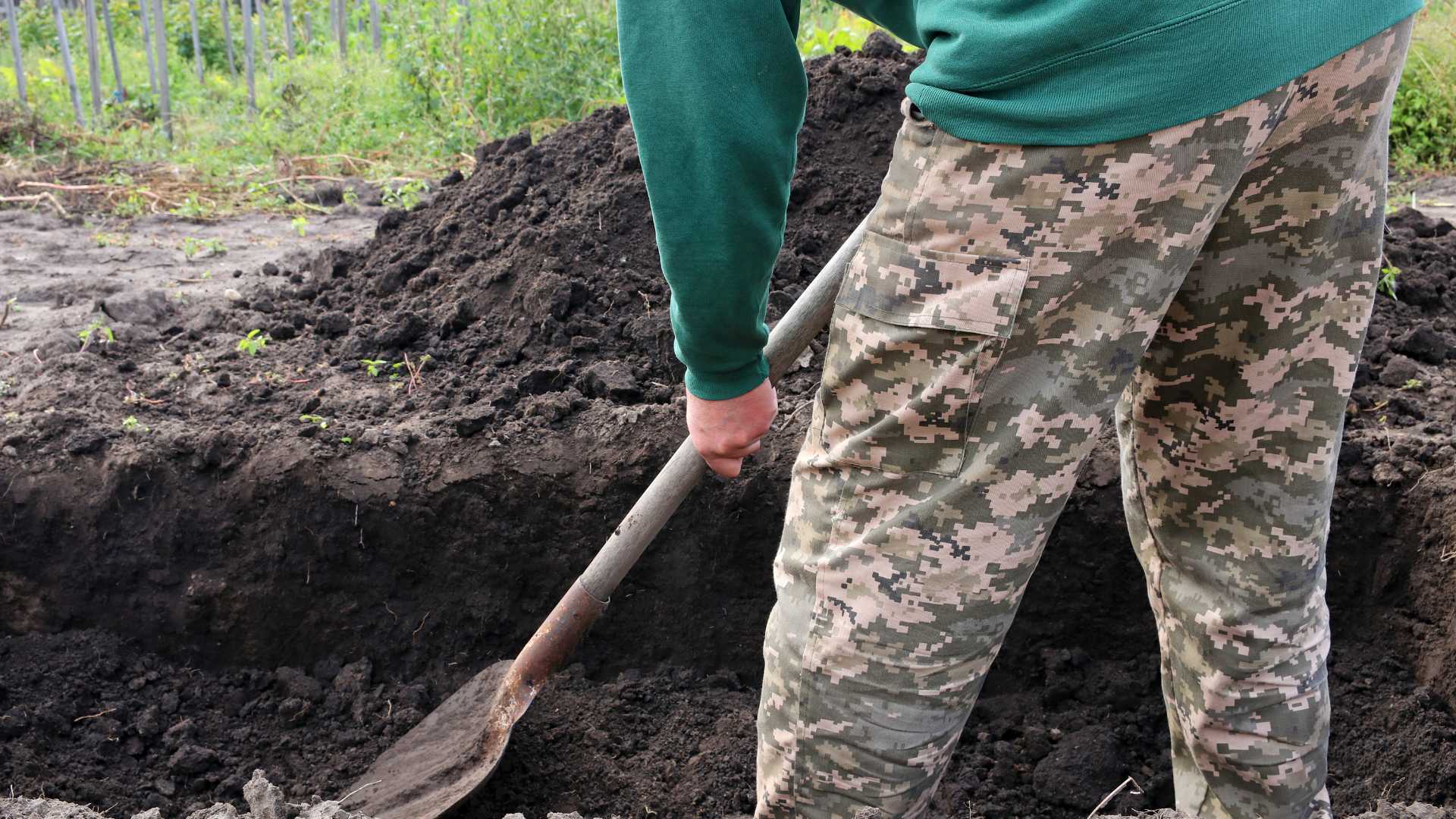Many people have questions about installing soakwells in their homes, especially about whether or not it is legal and whether or not it is necessary. Do all residential buildings have to have them? The answer can be different based on some things, such as local laws, the weather, and how the property is built. The article aims to make sense of this complicated matter by carefully exploring the rules for installing soakwells and the situations in which they are needed. We will also discuss the benefits of having a soakwell, even if it isn’t required, so you can fully understand this important part of managing residential properties.
What Soakwells Are And Their Purpose In Residential Properties?
Soakwells are underground tanks or voids that collect excess stormwater from roofs and paved areas through downpipes and drainage systems. They are designed to slowly release this water into the surrounding soil, preventing it from flooding properties or eroding landscapes. Soakwells can be constructed from various materials, including concrete, polypropylene, and PVC, each offering different benefits in terms of durability, capacity, and environmental impact.
The primary goal of installing soak wells is to lessen the possibility of water damage to homes and infrastructure. By efficiently managing stormwater runoff, soakwells prevent the accumulation of water on the surface, which can lead to flooding, soil erosion, and damage to property foundations. Soakwells are also very important for keeping the groundwater table full. They ensure rainwater soaks into the ground instead of running into storm drains or waterways, which can pollute and damage the environment.
The installation of soakwells in residential properties is the adherence to legal requirements. In regions like Western Australia, homeowners must effectively manage stormwater runoff within their property boundaries. This legal framework ensures the stormwater is appropriately channelled into the ground, preventing runoff to neighbouring properties or public infrastructure. Soakwells, by design, facilitate the infiltration of rainwater back into the earth, maintaining the natural water table and contributing to the ecological balance. Don’t let heavy rain damage your landscape; call Perth’s leading soakwell specialists for immediate assistance!

Pros And Cons Of Mandatory Soakwell Installation
The debate over making soakwell installation mandatory for residential properties is multifaceted, touching on environmental, legal, and economic considerations. Let’s explore the advantages and disadvantages of such a mandate, aiming to provide a balanced perspective on this critical issue.
Pros Of Mandatory Soakwell Installation
Improved Stormwater Management
One primary benefit of mandatory soakwell installation is the significant improvement in stormwater management. Soakwells efficiently capture and redirect rainwater into the ground, preventing flooding and erosion. This is particularly beneficial in areas prone to heavy rainfall, with high water damage and soil erosion risk. By ensuring every property has a soakwell, communities can better manage stormwater, reducing the strain on public drainage systems and minimising the risk of flood damage.
Environmental Protection
Soakwells play a crucial role in protecting the environment by facilitating the natural filtration of rainwater and reducing runoff pollution. As stormwater percolates through the soil, it undergoes a natural filtration process that removes pollutants, protecting local waterways and groundwater from contamination. Mandatory soakwell installation would ensure that more rainwater is treated this way, contributing to cleaner water bodies and a healthier ecosystem.
Legal Compliance And Uniformity
Implementing a mandate for soakwell installation ensures legal compliance and uniformity across regions. This uniform approach can simplify regulatory enforcement and ensure all homeowners contribute to stormwater management efforts. It also allows consistency in managing stormwater across different properties, leading to a more cohesive and effective overall strategy.
Long-Term Cost Savings
While the initial cost of installing soakwells can be significant, the long-term savings on infrastructure and property damage repairs can be substantial. Effective stormwater management reduces the need for costly repairs to public drainage systems and minimises water damage to roads, properties, and landscapes. Over time, the collective savings from reduced maintenance and repair costs can offset the initial investment in soakwell installation.
Cons Of Mandatory Soakwell Installation
High Initial Costs
The most significant drawback of mandatory soakwell installation is the high initial cost. Installing soakwells can be expensive, especially for existing properties where installation may require significant excavation and landscaping work. People with tight budgets may need help to handle this extra cost, making people wonder if a blanket rule is fair and could work.
Space And Technical Constraints
Not all properties are suitable for soakwell installation due to space limitations or technical constraints. For example, in densely populated urban areas, the available space for soakwells may need to be improved, making compliance difficult or impossible for some homeowners. Additionally, properties with certain soil types may not be suitable for soakwells, as the soil may not allow efficient water absorption and filtration.
Potential Over-Regulation
There is also a concern that mandatory soakwell installation could lead to over-regulation, imposing unnecessary burdens on homeowners in areas where stormwater management is not a significant issue. In regions with low rainfall or where existing drainage systems are adequate, the benefits of soakwells may not justify the costs and regulatory requirements associated with mandatory installation.
Maintenance Responsibilities
Finally, soakwells require regular maintenance to function effectively, including cleaning and inspections to ensure they are not blocked by debris. Mandatory installation would place this maintenance burden on all homeowners, including those needing more resources or the ability to maintain their soakwells properly. This could lead to compliance issues and reduce the effectiveness of the stormwater management strategy. Ready to tackle the wet season? Secure your property with our expert soakwell installation—book now!
Factors Influencing The Necessity Of Soakwells
The decision to install soakwells in residential properties is influenced by various factors, each significant in ensuring a property’s structural integrity and environmental sustainability. Let’s explore the multifaceted considerations homeowners should weigh when contemplating the installation of soakwells.
Legal And Municipal Requirements
Legal frameworks and municipal ordinances dictate the management of stormwater runoff across different regions, particularly in Western Australia. Homeowners must generally contain all stormwater within their property boundaries to prevent runoff to neighbouring properties or public infrastructure. Failure to comply can result in non-compliance orders and escalating consequences. Thus, understanding and adhering to these regulations is a primary factor driving the necessity of soakwells in residential areas.
Protection Of Property
Installing soakwells is a proactive measure to protect residential properties from potential water damage. If not properly managed, excess rainwater can lead to structural damage, including leaks, flooding, and foundation cracks. Soakwells efficiently remove excess water, directing it away from the property’s foundation and thus preventing costly repairs and maintenance in the long run.
Soil Erosion Prevention
In areas prone to sudden storms, such as Western Australia, the risk of soil erosion is significantly high. Properties with clay soil covered by a thin layer of topsoil are especially vulnerable to being washed away during heavy rains. Soakwells mitigate this risk by capturing and gradually releasing stormwater into the ground, preserving soil integrity and preventing erosion.
Maintenance Of Paved Surfaces
Paved surfaces around a home or business are susceptible to damage from constant exposure to rainwater and runoff. Over time, this can lead to sagging, cracking, and uneven surfaces, posing safety risks. Soakwells ensure that paved areas remain intact and safe by effectively managing stormwater runoff.
Environmental Protection
As urban areas expand, the increase in impervious surfaces reduces the natural water table. Soakwells play a crucial role in environmental conservation by allowing rainwater to percolate back into the ground, replenishing the water table and supporting the natural water cycle. This process is vital for sustaining groundwater levels and preventing the pollution of waterways with stormwater runoff.
Cost-Effectiveness
While the initial installation of soakwells may seem like a significant investment, the long-term savings on property maintenance and repair costs make it a cost-effective solution. Traditional drainage systems require regular maintenance to prevent blockages. In contrast, soakwells offer a low-maintenance alternative that effectively manages stormwater without needing constant upkeep.
Enhancing Water Quality
Another critical factor influencing the necessity of soakwells is the potential to enhance water quality. Stormwater runoff often carries pollutants, such as oils, chemicals, and debris, from paved surfaces, which can harm the environment. Soakwells facilitate the natural filtration of rainwater as it percolates through the soil, effectively reducing the pollutants that reach groundwater or surface water bodies. This filtration process is essential for maintaining the quality of local water sources and supporting the ecosystem’s overall health.
Preserving Foundation Stability
Poor stormwater management can severely compromise a property’s foundation’s stability. Excessive water accumulation can lead to soil oversaturation, which, in turn, can cause the soil to expand and compress. This movement may result in foundational shifts, leading to cracks in walls, ceilings, and floors, among other structural issues. By installing soakwells, homeowners can maintain stable soil moisture levels around their property, minimising the risk of sudden shifts that could threaten the foundation’s stability. This preventative measure is crucial for protecting the long-term structural integrity of the building.
Reducing Maintenance Costs
Compared to traditional drainage systems, which often require frequent cleaning and can be prone to blockages, soakwells offer a low-maintenance alternative. Once installed, they efficiently manage stormwater runoff without regular intervention. This reduces the overall maintenance burden and translates to significant cost savings over time. Homeowners can avoid the expenses of clearing blockages and repairing or replacing damaged drainage components, making soakwells an economically wise choice for effective stormwater management.
Environmental Sustainability
The installation of soakwells aligns with broader environmental sustainability goals. By facilitating groundwater recharge, soakwells help to counteract the reduction of permeable surfaces in urban and suburban areas. This is increasingly important as the expansion of impervious surfaces contributes to the depletion of the natural water table. Soakwells ensure that rainwater is absorbed into the ground, supporting the replenishment of groundwater reserves and promoting a balanced ecosystem.
Tailored Solutions
Finally, the necessity of soakwells is influenced by each property’s specific conditions, including soil type, property size, and local climate. These factors determine the optimal design and placement of soakwells to ensure efficient stormwater management. Professional assessment and installation ensure that soakwells are tailored to meet each property’s unique needs, maximising their effectiveness and ensuring compliance with local regulations.
Best Practices For Soakwell Installation And Maintenance
Material Selection
The choice of material for a soakwell is not just about durability; it also impacts the soakwell’s efficiency, cost, and environmental footprint. Concrete soakwells are lauded for their longevity and robustness, making them ideal for commercial areas or residential zones with high vehicular activity. They can withstand substantial pressure, reducing the risk of collapse under heavy loads. However, concrete soakwells are generally more expensive and less environmentally friendly due to the carbon footprint associated with concrete production.
Conversely, polypropylene and PVC soakwells present a more flexible and lightweight option. These materials are easier to install, often resulting in lower labour costs. They are particularly suited to residential areas where heavy loads are less of a concern. Their flexibility makes them more resistant to soil movement, which can be a significant advantage in areas prone to ground shifting. When selecting the material for a soakwell, consider not only the immediate environment and load-bearing requirements but also the long-term sustainability and cost implications.
Capacity And Placement
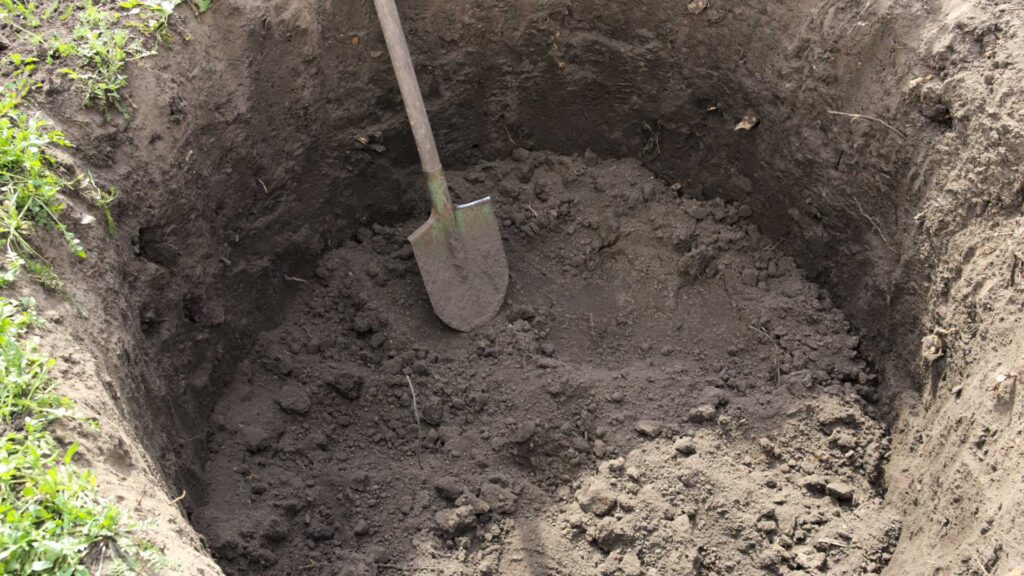
Determining the appropriate size and location for soakwells is a science in itself. It involves understanding the property’s layout, the potential volume of runoff water, and the soil’s capacity to absorb water. The roof area and impervious surfaces like driveways and patios contribute to the volume of runoff that must be managed. Local climate data, including average rainfall and storm intensity, are crucial in calculating the required capacity.
Professional hydrological assessment can provide precise calculations, ensuring the soakwell system is not over- or underdesigned. Placement is equally critical, with soakwells needing to be situated away from property foundations and utility lines. They should also be accessible for maintenance while ensuring they do not interfere with landscaping or future property developments.
Regular Maintenance
Routine maintenance is the key to sustaining soakwell functionality and longevity. Inspections should be scheduled annually, with additional checks following severe weather events. Maintenance activities include clearing out leaves, sediment, and other debris that could clog the system and impair its ability to absorb water efficiently. Sometimes, it may be necessary to pump out water and sludge to prevent overflow or damage to the soakwell structure.
Homeowners should be vigilant for signs of soakwell failure, such as persistent puddles, water damage to nearby structures, or unusually soggy ground. Early detection of issues allows for timely repairs, preventing more extensive damage and costly remediation.
Compliance With Local Regulations
Navigating the regulatory landscape is crucial for soakwell installation. Local government bodies often have specific guidelines covering the design, installation, and maintenance of soakwells. These regulations may dictate minimum distances from property boundaries, buildings, and other structures, as well as soakwell capacity and construction standards.
Compliance ensures the effectiveness of the soakwell system and protects property owners from legal and financial liabilities. Getting involved with the local government and hiring a professional worker who knows the rules can speed up the approval process and ensure the soakwell system meets all the legal requirements.
Conclusion
A soakwell is an underground tank or void that collects runoff from rooftops and paved surfaces via downspouts and drainage systems. It is made to slowly release this water into the dirt around it so it doesn’t flood homes or damage landscapes. By managing stormwater runoff wells, the main goal of installing soakwells is to lower the risk of water damage to homes and infrastructure.
In places like Western Australia, homeowners are responsible for controlling the flow of storms on their land. This set of laws ensures that rainwater goes into the ground correctly so it doesn’t damage nearby properties or public structures. Soakwells help rainwater soak back into the ground, keeping the natural water table steady and helping balance the environment.
There are many sides to the argument about whether or not private properties should be required to have soakwells. These sides include legal, economic, and environmental concerns. Some of the benefits of requiring soakwells are better stormwater control, protection of the environment, legal compliance and consistency across regions, and lower long-term costs. The cons, on the other hand, include high start-up costs, limited room and technology, the possibility of too much regulation, and the need to take care of maintenance.
Local rules, weather conditions, and how a property is built can affect the necessity of soakwells. Managing stormwater runoff is governed by the law; if you don’t follow it, you could face non-compliance orders and worsening penalties. One main reason soakwells are needed in residential places is that people must understand and follow these rules.
Putting in soakwells is important to protect homes from water damage, land erosion, and maintenance problems. They effectively eliminate extra rainwater, saving money on fixes and upkeep. Soakwells also help protect the environment by letting rainwater seep back into the ground, refilling the water table, and keeping the natural water cycle going.
In addition to being cheap, soakwells are a low-maintenance option that manages stormwater well without constantly having to be fixed. They can improve water quality by making it easier for rainwater to filter naturally as it seeps through the ground. This lowers the amount of pollution that gets into groundwater or surface water. This filtering process is necessary to keep the quality of local water sources high and the environment healthy.
Soakwells also help the environment by making it easier for groundwater to recover, which counteracts the loss of permeable surfaces in cities and suburbs. They ensure rainwater soaks into the ground, which helps groundwater reserves fill up and keep the environment balanced.
Each property has its unique factors, such as the type of soil, the size of the property, and the weather in the area. Professional evaluation and construction ensure that soakwells are customised to fit the specific needs of each property. This makes them more effective and compliant with local laws.
When picking the right soakwell material, it’s important to consider the material, its ability, and where it will go. People praise concrete soakwells for how long they last, but they tend to be more expensive and less eco-friendly because they leave a bigger carbon footprint. Polypropylene and PVC soakwells are better for residential places because they are more flexible and light. For a soakwell to keep working and last a long time, it must be maintained regularly.
Content Summary
- Soakwells are underground systems designed to manage excess stormwater in residential areas.
- They collect water from roofs and paved areas, releasing it slowly into the surrounding soil.
- Soakwells prevent flooding, soil erosion, and damage to property foundations.
- They are crucial for maintaining the groundwater table and preventing environmental pollution.
- The necessity for soakwells varies based on local laws, weather conditions, and property design.
- In some regions, like Western Australia, soakwells are mandated to manage stormwater within property boundaries.
- Soakwells are made from materials like concrete, polypropylene, and PVC, each with different benefits.
- Mandatory soakwell installation debates consider environmental, legal, and economic aspects.
- Pros include improved stormwater management, environmental protection, and long-term cost savings.
- Cons include high initial costs, space and technical constraints, and potential over-regulation.
- Maintenance responsibilities can be a burden for some homeowners.
- Factors influencing the necessity of soakwells include legal requirements, property protection, and environmental sustainability.
- Soil erosion prevention and maintenance of paved surfaces are also significant considerations.
- Soakwells contribute to cost-effectiveness by reducing maintenance and repair costs.
- Enhancing water quality through natural filtration is another benefit of soakwells.
- They help preserve foundation stability by managing soil moisture levels.
- Soakwells support environmental sustainability through groundwater recharge.
- Tailored solutions ensure soakwells meet the specific needs of each property.
- Material selection for soakwells affects their efficiency, cost, and environmental impact.
- Concrete soakwells are durable but more expensive and less eco-friendly.
- Polypropylene and PVC soakwells offer a lightweight, flexible option for residential use.
- The capacity and placement of soakwells are determined by property layout, runoff volume, and soil absorption capacity.
- Professional assessment is crucial for designing an effective soakwell system.
- Regular maintenance, including clearing debris and inspecting for damage, is essential.
- Compliance with local regulations ensures soakwell effectiveness and legal protection.
- Soakwells are a proactive measure against water damage to properties.
- They are key in stormwater management, especially in areas prone to heavy rainfall.
- The debate on mandatory installation reflects broader concerns about urban development and environmental management.
- The initial investment in soakwells can lead to significant infrastructure and property maintenance savings.
- Legal frameworks in certain areas mandate effective stormwater management practices, including soakwells.
- The environmental benefits of soakwells include reducing runoff pollution and supporting the natural water cycle.
- Uniform soakwell installation can simplify regulatory enforcement and ensure community-wide stormwater management.
- The high cost of soakwell installation poses challenges for some homeowners, raising questions about fairness and feasibility.
- Space limitations and soil types can restrict the suitability of soakwells for some properties.
- Over-regulation concerns highlight the need for balanced policies that consider local conditions and needs.
- Mandatory soakwell maintenance could be burdensome for homeowners needing more resources or knowledge.
- The decision to install soakwells involves weighing multiple legal, environmental, and economic considerations.
- Protecting properties from structural damage is a key motivator for soakwell installation.
- Soakwells mitigate soil erosion risks, particularly in areas with vulnerable soil compositions.
- Paved surface maintenance is another benefit of effective stormwater management through soakwells.
- The role of soakwells in environmental conservation is increasingly important as urban areas expand.
- The cost-effectiveness of soakwells extends beyond initial installation to long-term property and infrastructure savings.
- Enhancing local water quality through the natural filtration process is a critical environmental benefit of soakwells.
- Foundation stability is directly impacted by effective stormwater management, highlighting the importance of soakwells.
- Compared to traditional drainage systems, soakwells offer a low-maintenance, efficient alternative.
- The groundwater recharge facilitated by soakwells supports the broader goal of environmental sustainability.
- Tailoring soakwell solutions to individual properties ensures optimal stormwater management and regulatory compliance.
- Material choice for soakwells impacts their durability, environmental footprint, and installation cost.
- Proper soakwell capacity and placement are essential for managing runoff and protecting property infrastructure.
- Regular soakwell maintenance and compliance with local regulations are key to long-term effectiveness and legality.
Frequently Asked Questions About Soakwell
Some regions may have exceptions or exemptions to soakwell requirements for certain residential properties or specific situations. For example, properties with adequate natural drainage, alternative stormwater management systems, or limited impervious surfaces may be exempt from soakwell requirements.
To determine if soakwells are mandatory for your residential property, consult local building authorities, zoning departments, or environmental agencies responsible for regulating stormwater management. They can provide information on applicable regulations, requirements, and permits related to soakwell installation.
Not complying with soakwell requirements for residential properties can result in various consequences, including fines, penalties, enforcement actions, delays in obtaining building permits or occupancy permits, and increased risk of property damage from flooding or drainage issues.
Alternatively, stormwater management practices can be used instead of soakwells on residential properties. Depending on site characteristics, local regulations, and environmental considerations, these may include rain gardens, permeable pavement, bioswales, retention ponds, or green roofs.
To determine if your property needs a soakwell, consider the following factors: local rainfall patterns, soil type, the extent of impervious surfaces (like driveways and patios), and local building codes or regulations. Consulting with a local council or a professional in stormwater management can provide guidance based on these factors and ensure compliance with any legal requirements.





